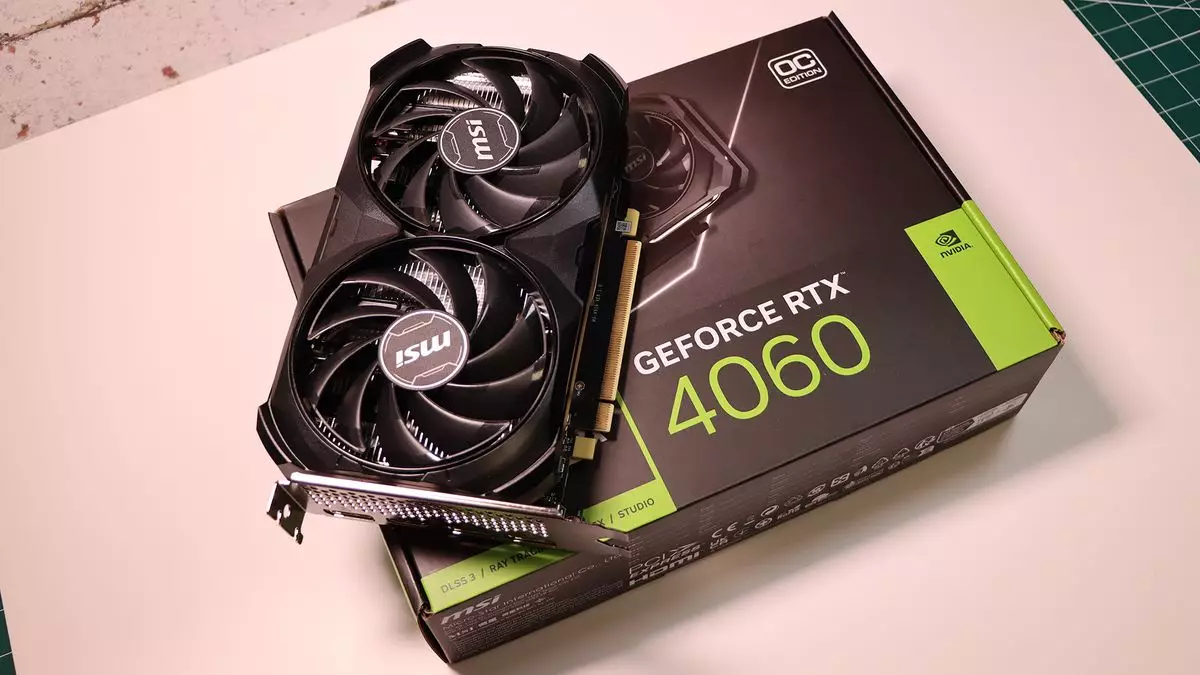The landscape of gaming hardware is an ever-evolving canvas, with advancements that prompt gamers to reconsider their gear continuously. Recently, the latest results from the Steam hardware survey have highlighted notable shifts in GPU adoption rates among gamers. With a pronounced increase in users of Nvidia’s GeForce RTX 4060 and 4060 Ti, these statistics serve as a reflective window into consumer behavior, technological trends, and market dynamics.
Recent data indicates a 1.17% uptick in the number of users leveraging the Nvidia GeForce RTX 4060, while the RTX 4060 Ti has seen a 0.76% rise during September. At first glance, these metrics might not appear groundbreaking, but a deeper dive reveals a significant shift. The RTX 4060 has increased its market share from 3.41% to 4.58%, representing a remarkable 34% growth. This surge can largely be attributed to the recent price reductions on mid-range GPUs, making them more accessible to a broader audience.
Moreover, when considering the mobile variant of the RTX 4060, which utilizes the same GPU architecture, the collective market presence of this graphics card family eclipses that of any other offerings available within the Steam ecosystem. This uptick underscores not just a temporary trend but possibly a larger movement towards more budget-friendly gaming solutions as players seek to balance performance with cost.
Understanding the driving forces behind these numbers is critical. The increased geographical focus on the Chinese market, highlighted by a noticeable 1.54% rise in Simplified Chinese language users, suggests significant local engagements likely influenced by releases like Black Myth: Wukong. Such titles can stimulate interest in hardware upgrades, as gamers seek to enhance their experiences through improved graphics capabilities.
On the western front, the anticipation surrounding upcoming graphics card generations, including the Nvidia RTX 50-series and AMD RX 8000-series, compounds this scenario. Gamers looking to upgrade with an eye on affordability might opt for existing mid-tier solutions like the RTX 4060 or the 4060 Ti. With prices on these cards finally trending below $300, they become enticing options for enthusiasts previously priced out of the GPU market due to excessive costs.
The Broader Implications for Gaming Hardware Trends
This shift in GPU preferences has broader implications for the gaming industry. With Nvidia’s 40-series graphics cards beginning to see price reductions, coupled with declining costs across the board, a viable entry point emerges for gamers aiming to delve into current-generation performance. Historically, the introduction of new hardware has provided consumers with opportunities to capitalize on reduced pricing for existing technology, as retailers attempt to clear inventory in anticipation of new arrivals.
Interestingly, not all data from the hardware survey reflects a similar growth narrative. Notable fluctuations can be seen in operating system preferences, where Windows 10 has witnessed a resurgence, capturing an increase of 1.57%, while Windows 11 has receded by 1.48%. This shift back to the established OS raises questions about the immediate acceptance of newer technology among gamers who often depend on stability and proven performance within their setups.
Looking ahead, one might speculate on the impact of upcoming GPU releases and whether they will catalyze further shifts in consumer mentality. While current trends indicate interest in mid-range cards, the hesitation surrounding next-gen launches often delays immediate purchases. Diving deeper into this consumer behavior can help manufacturers shape their pricing strategies, possibly influenced by consumer feedback and anticipated performance metrics.
If AMD can take proactive measures to differentiate its upcoming RX 8000-series GPU offerings with competitive pricing, it could help cultivate an even larger segment of budget-conscious gamers eager to upgrade. Ultimately, the insights from the latest Steam hardware survey suggest a cautious optimism in the gaming graphics market; as price points diminish and performance rises, gamers seem poised to embrace innovations that allow for an enriched gaming experience without the financial strain that has characterized the industry for over a year.


Leave a Reply